The Scottish Dirk is an integral part of the full Highlander regalia – Originally a utilitarian fighting weapon, the dirk evolved into a largely ceremonial blade, with decoration to match. Earlier Scottish dirks were simply made and durable thrusting daggers that were usually held tip-down in an ice-pick fashion to stab down into the collar and torso of a foe. In battle many were held in the left hand, concealed behind the targe shield. Held tightly alongside the shield grip, the dirk could be fatally thrust at a foe at very close range.
After the disastrous Scottish defeat of Culloden, the English banned the dirk along with most of the national weapons of the Scots. Only those in the military and the well-connected could carry them openly. As the British military felt financial strain the the decades after 1745, the dirk lost its position as a standard regimental weapon of British Army Highlander Regiments to the practical bayonet. Only officers and the well-to-do would continue to carry dirks, and these became embellished status symbols, often intentionally decorated to match the cutlery of the house.
These dirks, such as the one shown here have a distinct level of decor that separate it from the simpler, early dirks. The grip was changed over time from a simple cylindrical grip, to a bulbed, waisted grip. This is intended to imitate the thistle – a symbol of Scotland. The blades were heavily etched and distinctive pins added into the grip. Though the dirk became a status symbol, it was still a deadly blade if it needed to be.
This Scottish Dirk has an embossed blade of high carbon steel. The hilt fittings are of metal. The grip is of faux ebony and has integrated pins of steel. The wood core scabbard is tightly wrapped in black leather and has accents of metal.





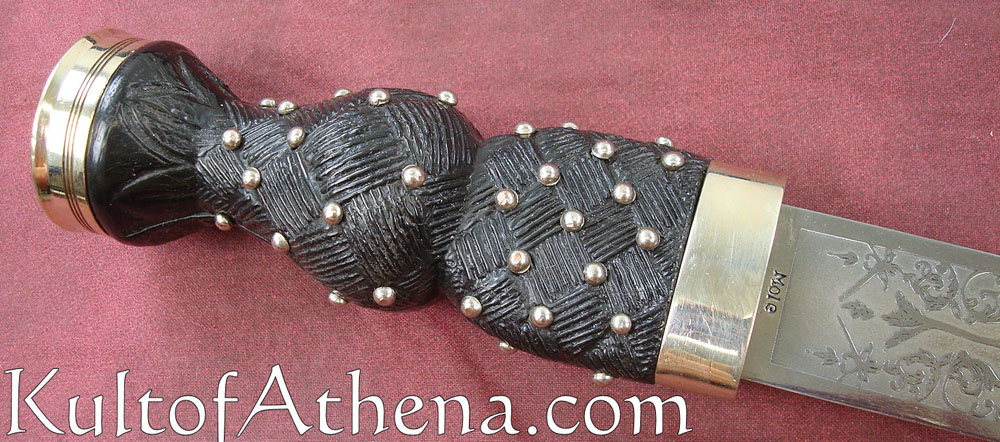

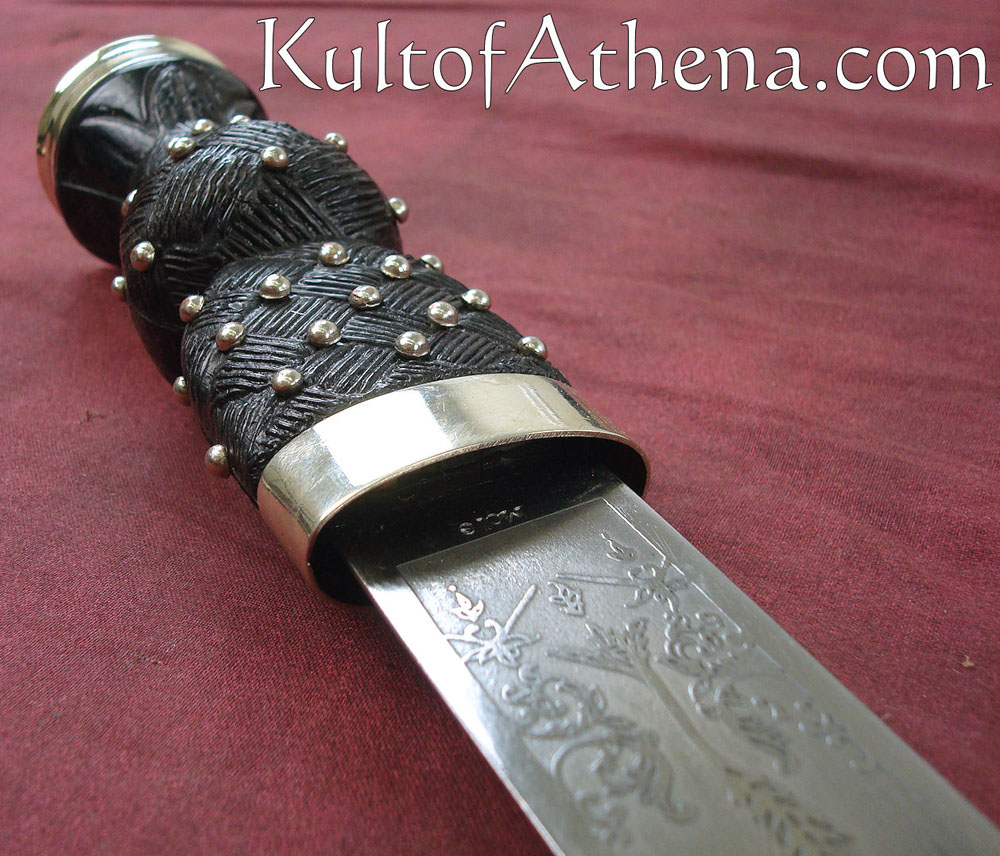
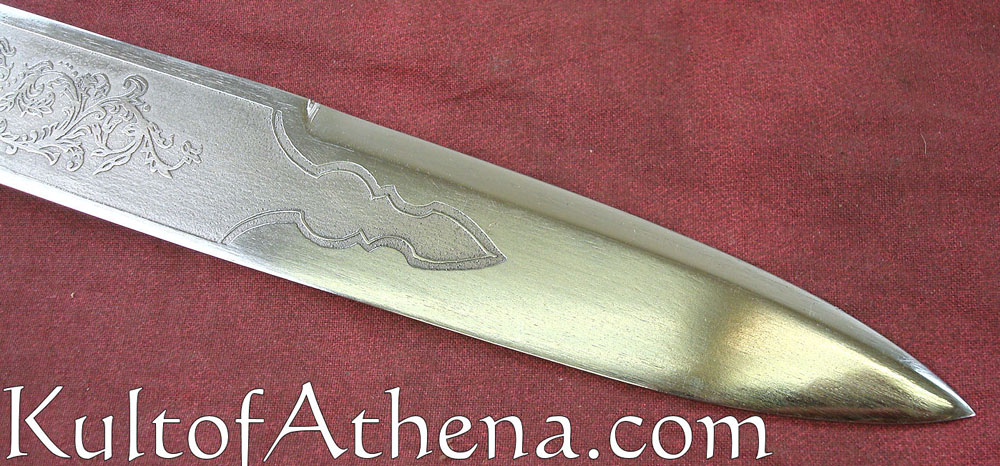
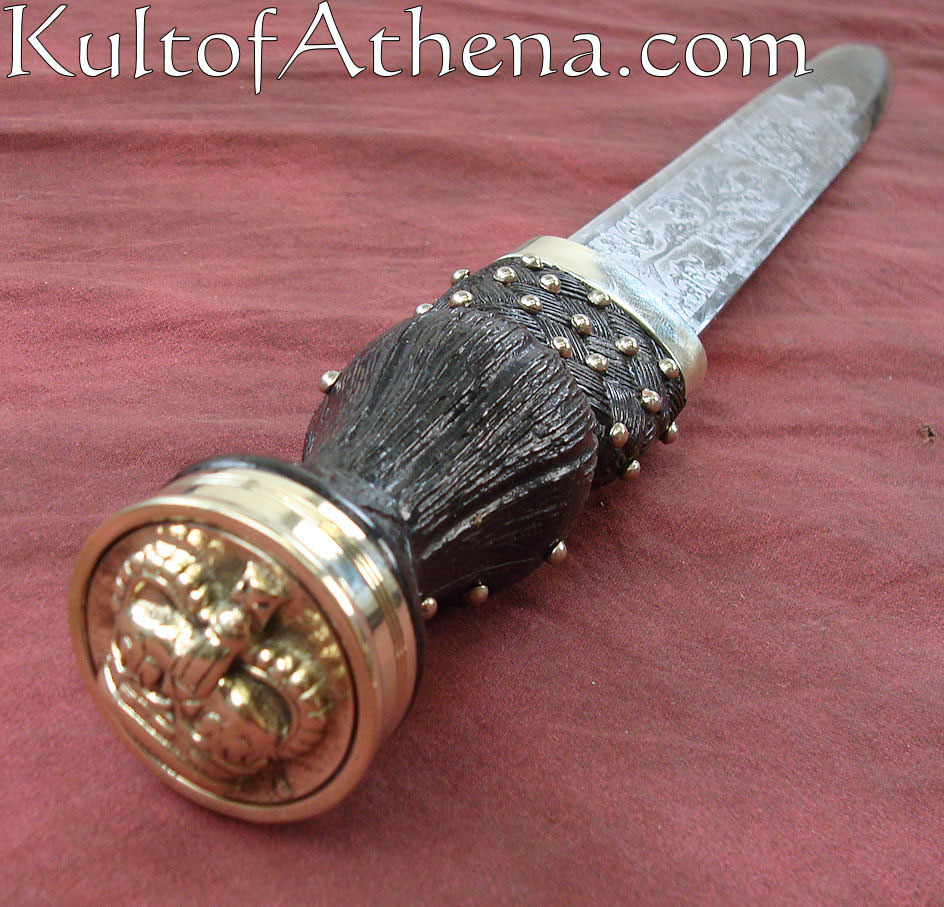






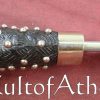
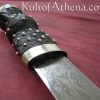




Reviews
There are no reviews yet.